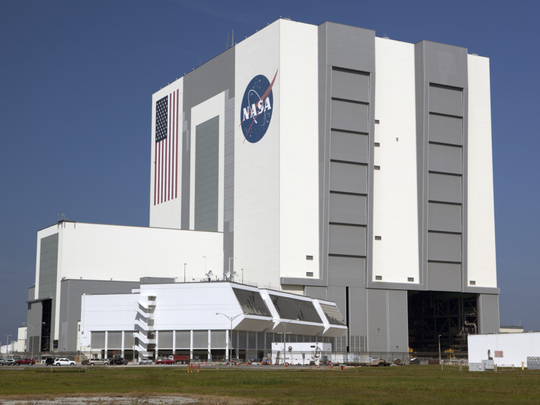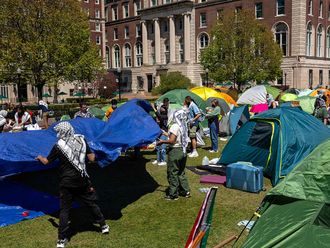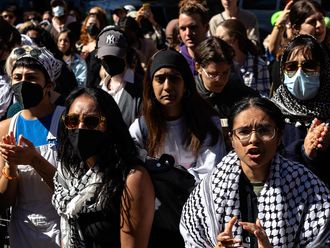
Recently a group of six astronauts, engineers and scientists submerged 19 metres to the bottom of an Atlantic Ocean reef to live underwater for Nasa’s extreme environment mission operations (Neemo) expedition. Living underwater has very similar dangers and parallels to living in a spacecraft: Closed-loop life support, pressurised habitat with incredibly efficient recycling systems, near weightless extra vehicular activities (EVAs, aka spacewalks), a packed daily schedule, communications with mission control, the inability to return to Earth safely without a special vehicle and sufficient re-entry time to protect the crew and keep them alive.
Each time they go outside, the habitat crew have to don full suits with personal oxygen tanks just like a spacewalk. The only undersea laboratory in the world, Aquarius, off Florida, is adjacent to deep coral reefs and has been home to 50 astronauts so far. Crew cannot resurface without decompression as, after 24 hours underwater, they are totally saturated from nitrogen and inert gases, so rising up to normal air quickly would be fatal. Living below the surface at 2.5 times the normal pressure of Earth allows for unprecedented science and exploration: Regular divers can only stay up to 30 minutes at that depth, yet aquanauts can perform EVAs for up to eight hours a day.
Astronauts train in giant swimming pools, so suiting up and performing hours of science missions outside the Aquarius in personal spacesuits with closed-loop oxygen is a pretty accurate analogue. Day two of the mission we introduced a lunar voice delay of 1.7 seconds that, like for the Apollo astronauts, isn’t too noticeable. Later, however, we will have a time delay identical to Mars and move to text-based communications instead as it’s impractical to have a conversation with a pause of 20 minutes between talking and replying! At the end of the mission, crew will be brought back over 17 hours to normal Earth pressure so that the gases can escape their bodies safely and they can resurface to see the sun and feel the wind again. Just like living in space, astronaut-aquanauts miss the weather.
“Topside” mission control sees the mission director, capcom, planning, EVA and science rep backed up by a 24/7 “watch desk” inside and two science trailers in the car park. The European Space Agency (ESA) deployed their new Lunar evacuation system assembly (Lesa), something that the Apollo missions were lacking. This brilliant feat of engineering allows a single person to secure and evacuate an incapacitated crew member on the moon and has been tested in the European astronaut centre’s neutral buoyancy facility.
My day job is Eurocom for the International Space Station (ISS), working hundreds of different science experiments and systems engineering with the astronauts in their packed 12-hour workdays on orbit. ISS has five mission controls: Houston, Huntsville, Munich, Moscow and Tsukuba. At each mission control only one flight controller position can talk back to the astronauts when they call Earth, and frequently Europe replies with a distinctly Australian accent — mine. After years of talking up to space, my voice now also travels down below the Atlantic Ocean. Working underwater with extended daily dive times and living in the pressurised Aquarius habitat means heat is pulled from their bodies much faster and their metabolism needs to work very hard.
As a result, they need to eat a lot more compared to when they’re on Earth. Food needs to be preserved similar to space food, and some of it is real space food that isn’t dehydrated military packs like the old days. European space food is produced in France and Italy and is genuinely tasty: Tiramisu, risotto, pasta, quinoa, vegetables, soups, even gingerbread and sausage sizzles! Making space food really is rocket science — it has to be nutritious, resistant to radiation, have a shelf life at room temperature of up to two years through natural preservatives and cannot produce any crumbs — small pieces like that can cause major damage to station equipment. The crew lived and trained together in the week before diving down to their new underwater home. Just like ISS missions where the crew train together for 2.5 years prior to Soyuz rocket launch, they grow to know each other well and become strong teammates before, during and after their mission. Space exploration truly transcends borders and rises above earthly politics to simply work together regardless of background, square away incredible science, research and technology development to benefit life on Earth and keep fellow crewmates safe while continuing long-lasting friendships.
— Guardian News & Media Ltd
Andrea Boyd is stationed at the European Astronaut Centre, the only Australian International Space Station flight controller on Earth. She certified as an ISS flight operations engineer for payload control and cross-certified in later years for crew operations, serving in the European Space Agency’s human spaceflight and robotic exploration directorate.









